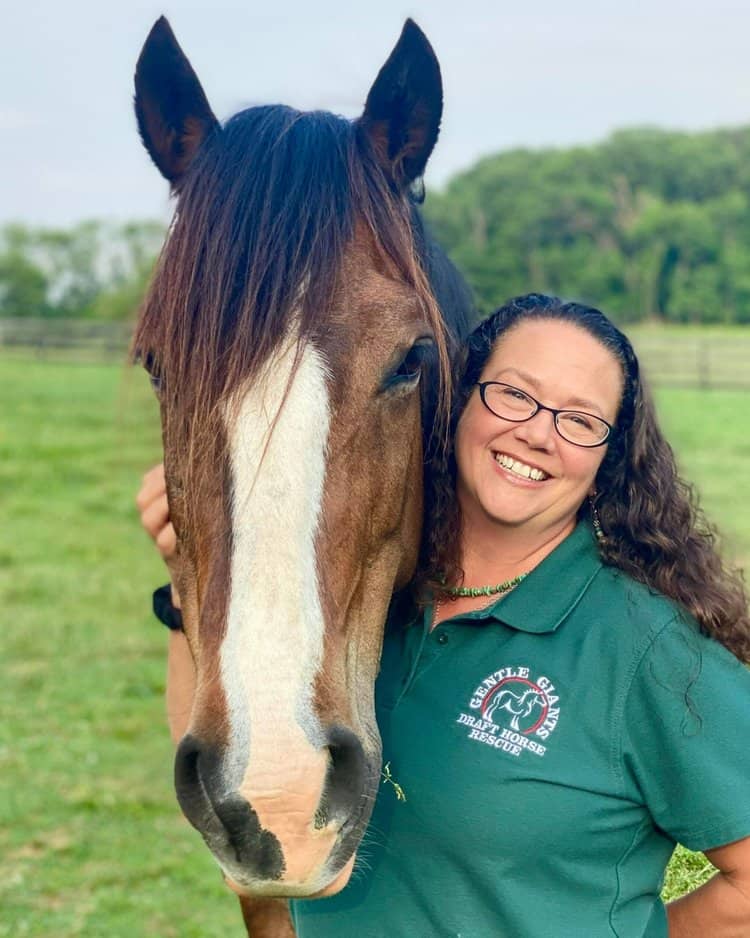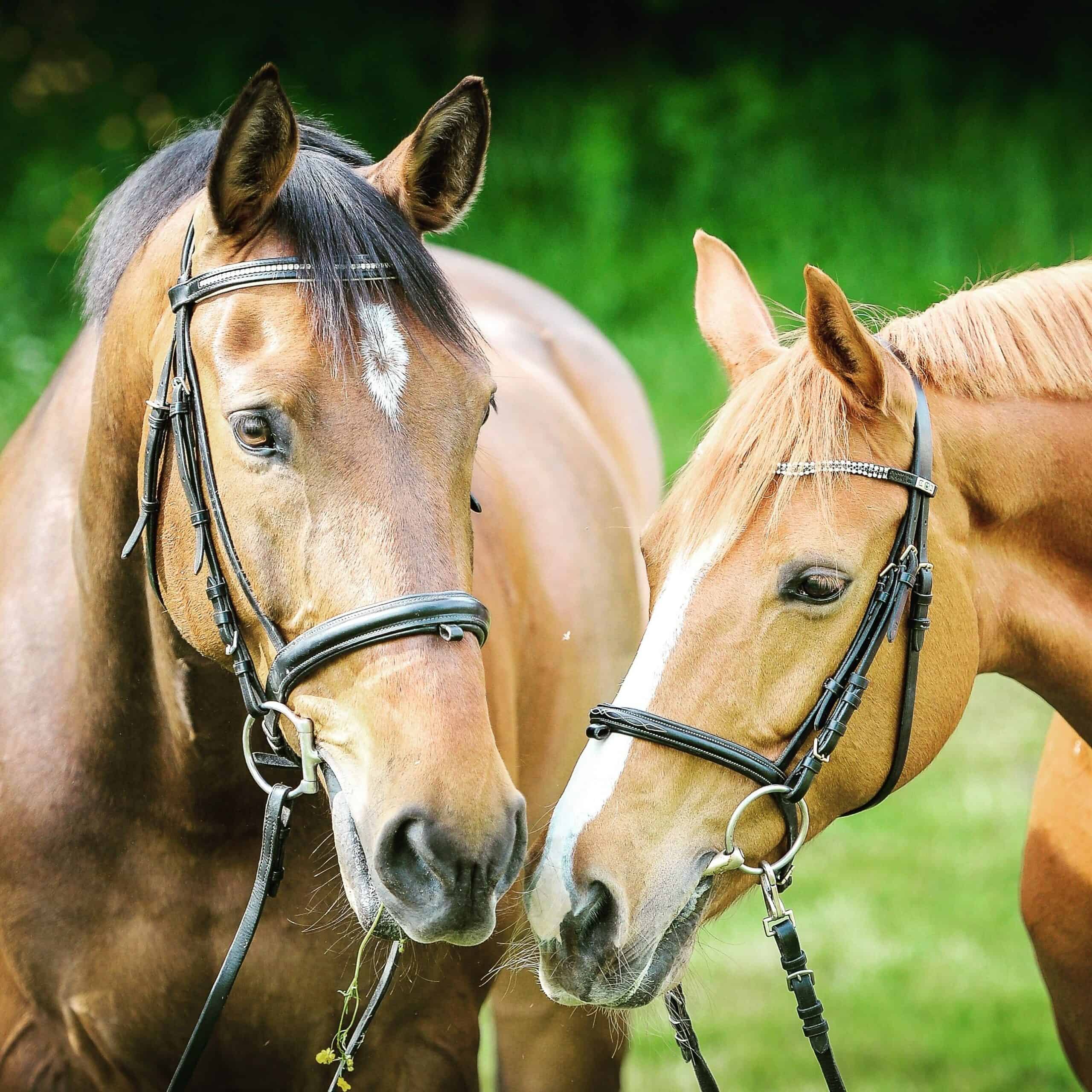
Ending Horse Slaughter in U.S.
Horse slaughter is not something many people think of from day to day. However, that is not how it is for Christine Hajek. She founded Gentle Giants, a non-profit that seeks to end horse slaughter as well as save as many horses from abusive and neglectful homes.

Gentle Giants
zThe Why
Christine grew up in a home with horses. As a small breeding farm, like most commercial equine ventures, the horses on the farm had to earn their keep. If they were not productive, they could not remain there. Which meant at the end of the horse’s useful, it was “liquidated” at an auction. This usually meant the horses did not go to a good home. Many were sold and slaughtered for meat eaten in Canada and France.
Not realizing this as a child, Christine was dismayed once she understood what happened to most horses at the end of their useful lifespan. This galvanized her desire to change this outcome, which brought her to creating Gentle Giants.
Her quest: to rescue, rehabilitate, retrain, and rehome.
The Mission
Rescue, rehabilitate, retrain, and rehome horses.
She and her army of volunteers and paid staff accomplish this through many different outlets.
Rescuing includes attending auctions and outbidding the meat buyers. Rehabilitating includes quarantining new horses to make sure illnesses aren’t passed, as well as assessments for injuries and other health problems. If they can be rehabilitated, they are. If they cannot, these animals are humanely euthanized while feeling safe and cared for.
Retraining horses includes helping these horses learn of a new life beyond pulling a plow or a carriage. Many of these horses are then adopted after they exit quarantine and complete training.
How Do They Do It?
Equine resucue is a difficult endeavor, in part, because there are so many costs associated with horses and their equipment. Many people do not understand the scope of the problems that come with rescuing horses. Christine started Gentle Giants as a hobby, in her backyard, where she and her partner would rescue a couple of horses at a time.
As they started getting more and more horses, they soon realized this had became too much to do on their own. At this point, they didn’t need funding—they needed volunteers.
And with more volunteers, they soon reached a fork in the road and a decision had to be made: scale back, or incorporate into a non-profit.
They decided to become a non-profit, and Gentle Giants became it’s own official 503c organization.

Scaling the Business
The Early Years
Christines prior career as a paramedic and firefighter gave her the grit and tenacity she would need in the creation of Gentle Giants.
She had seen professionals in the the non-profit sector regularly not be compensated adequately. There is the prevelant mindset that leaders of non-profits should be willing to sacrifice financial security or a competitive salary.
Gentle Giants pushes against this. Christine believes that people can still get paid well while doing good things in the world.
Initially, Christine felt that Gentle Giants should not have employees, only volunteers. However, she soon realized volunteers were not enough.
Business Structure
Non-profits are every bit as complicated, if not more so than for-profit ventures.
In addition to all of the normal business trappings, such as by laws and accounting, there is the additional stress of funding. Because you are not selling a product, you have to raise your funding.
So in addition to rescuing and rehabilitating these HUGE animals, there is the stress of continually getting the word out and creating financial partners who are also aligned with the vision of the non-profit. This can be exhausting and frustrating, as well as rewarding and enlivening. It’s both.
Social media creates it’s own pros and cons. It is an amazing tool to get the word out, but it also can trip an organization up.
A common question among non-profits: how much can you control the things your staff say? For example, if there is a sudden loss at the farm, you don’t want the staff to share that until there has been an opportunity to announce it.
These policies are sticky and necessary to help the business both stay true to its mission and succeed in maintaining good staff and volunteers.

Horse Slaughter
Understanding the Problem
There are approximately 9 million horses in the U.S. and in 2020, about 140,000 horses got shipped to slaughter. That is less than 1% of the equine population.
Conversely, every year almost a million horses are euthanized because of illness, injury, and end of life decline.
This is the choice that responsible horse owners take.
Responsibility
An important clarification, Christine is not saying that everyone who buys a horse has to keep that horse until the day that horse dies. People can’t always do that, and that is understandable.
However, there are responsible option to rehome them or euthanize them, depending on the circumstance. Horses are feeling, sentient beings.
Christine is confident that we could fix the problem if the equine community came together and refused to sell their horses for slaughter for meat.
She asks: what are the costs, and what does the care look like? If you can’t do right by it, then don’t buy it.
Photo credits: Photo by Raphael Wicker on Unsplash. Photo by micheile dot com on Unsplash

If you are curious to know more about how I can help you achieve your business or life goals, please contact me: Miriam@leavebetter.com
As someone who has been a therapist for over a decade and has been coaching people for over three decades, I am uniquely qualified to join you on your quest for seeking the best version of you possible.

